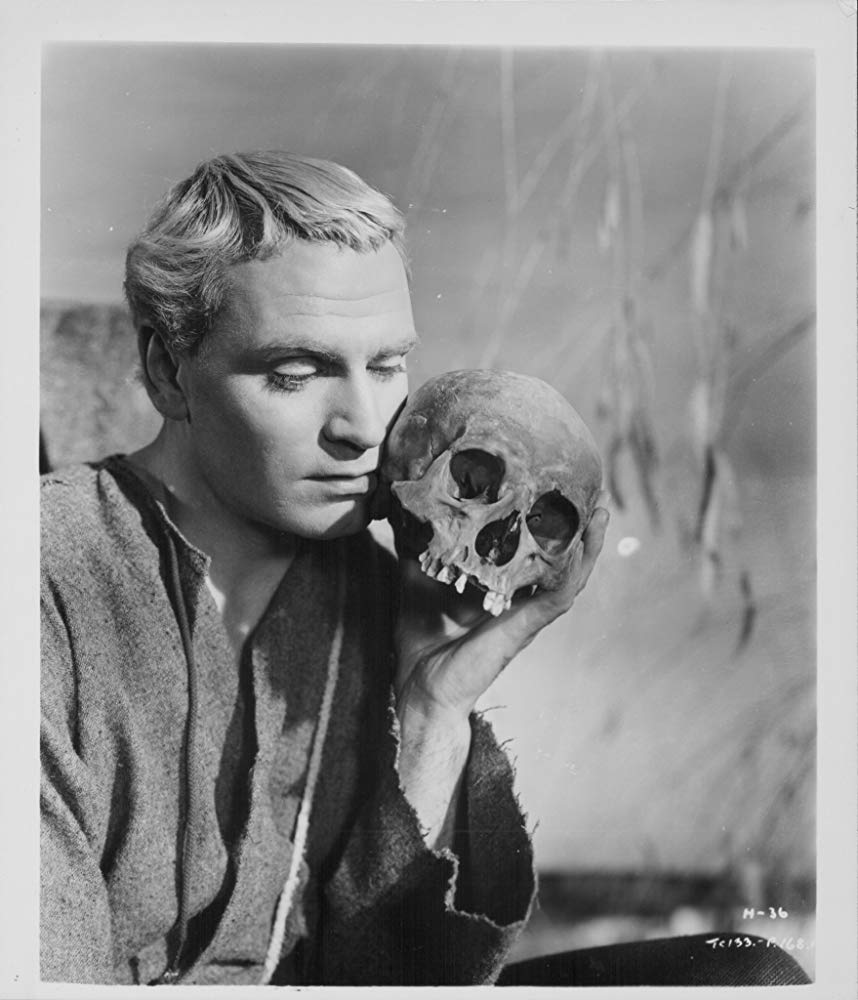Alas, Poor Yorick
Until Laurence Olivier’s Hamlet (1948), Shakespeare films were considered to be box office poison. A Midsummer Night’s Dream (1935) and Romeo and Juliet (1936) lost money, despite having top Hollywood stars in the leading roles. Studios were all in favor of releasing an occasional prestige film, even if it took a loss, but previous adaptations of the Bard suggested the audience wasn’t ready.
Olivier made Shakespeare acceptable by taking a more cinematic approach. Hamlet was photographed and lit like a deep-focus film noir. The camera glides along the dark halls and winding steps as though it was a living, breathing person. Through a subjective use of the camera, Olivier treats the audience as a voyeur — we feel we’re spying on a family coming apart at the seams. This is very much in keeping with Olivier’s Freudian interpretation of the play. Olivier even suggests a possible Oedipal relationship between Hamlet and his mother. Hamlet is seeking to eliminate a rival as much as he is seeking revenge for his father’s death.
This production is also innovative in Olivier’s use of a voice over for Hamlet’s soliloquies. If the soliloquies are meant to be Hamlet’s inner thoughts, then a voice over is a more natural representation than having the actor speak his thoughts out loud. Would Shakespeare have approved? We’ll never know, though it’s a technique that wouldn’t have been practical on the Elizabethan stage.
Hamlet won four Academy awards: Best Picture, Best Actor (Olivier), Best Black and White Art Direction/Set Direction, and Best Black and White Costume Design. The film was praised for its magnificent photography with Olivier given much of the credit for deciding to film in black-and-white rather than in color. Olivier’s previous Shakespeare film, Henry V (1944), was photographed in Technicolor. Years later, Olivier revealed during a television interview that he was having a quarrel with Technicolor at the time, and he chose to shoot Hamlet in black-and-white out of spite — not for creative considerations. Whatever the reason, it’s hard to imagine how this film could be any better in color. It remains the definitive film adaptation of the play, though Kenneth Branagh’s Hamlet (1996) comes close. Branagh filmed the entire four-hour play, where Olivier had to throw out about ninety minutes of the text in order to make the movie more appealing to a general audience.
Hamlet
(1948; directed by Laurence Olivier)
The Criterion Collection (DVD)
Friday, December 6 at 10:00 p.m. eastern on Turner Classic Movies
Reviews